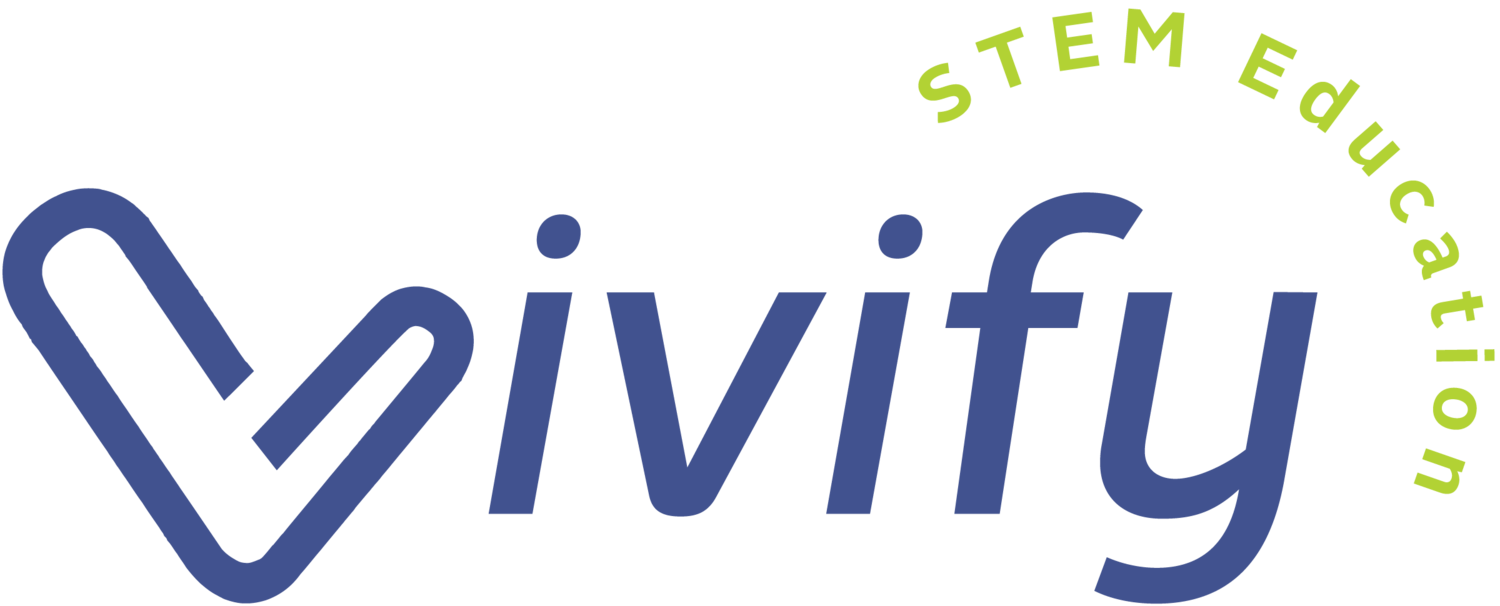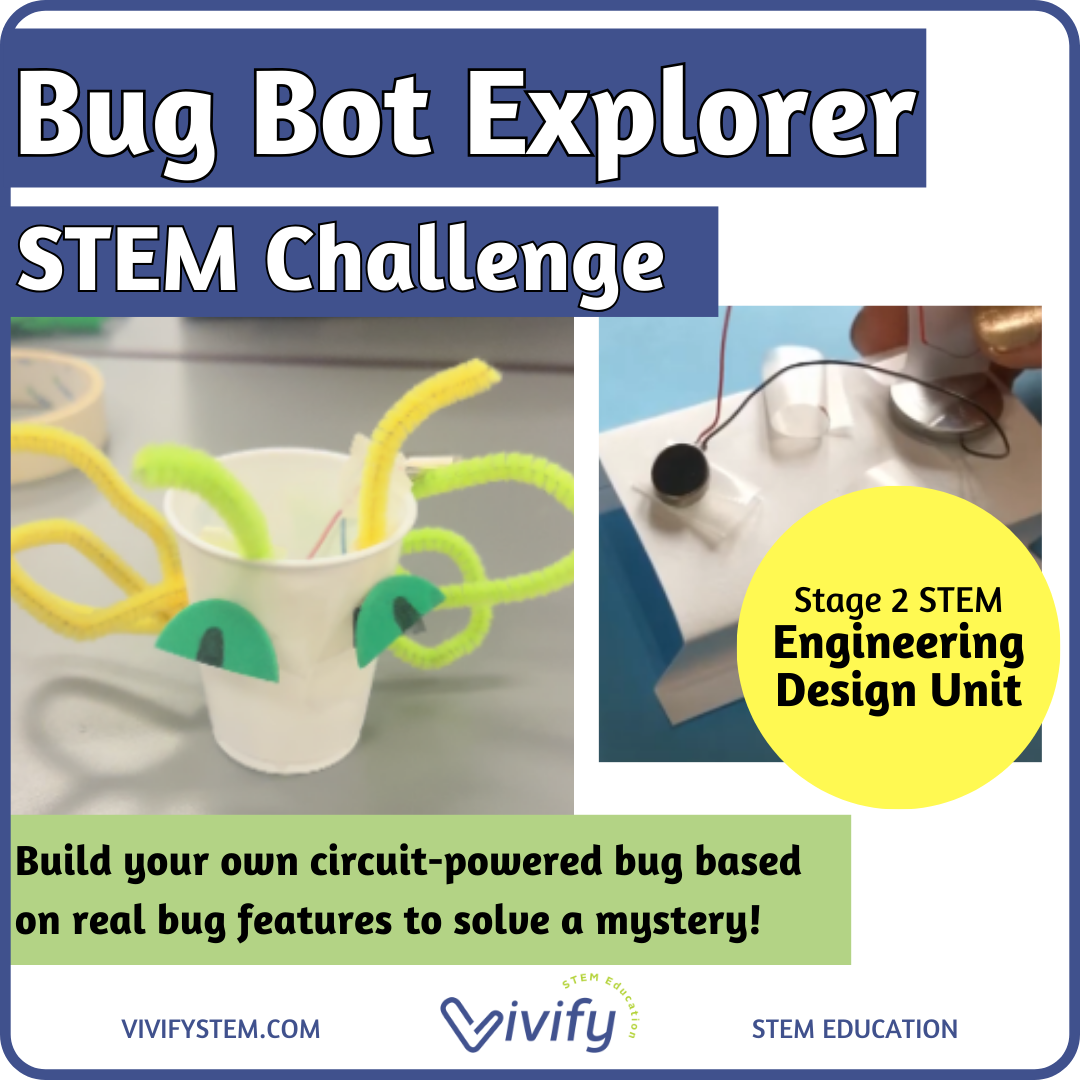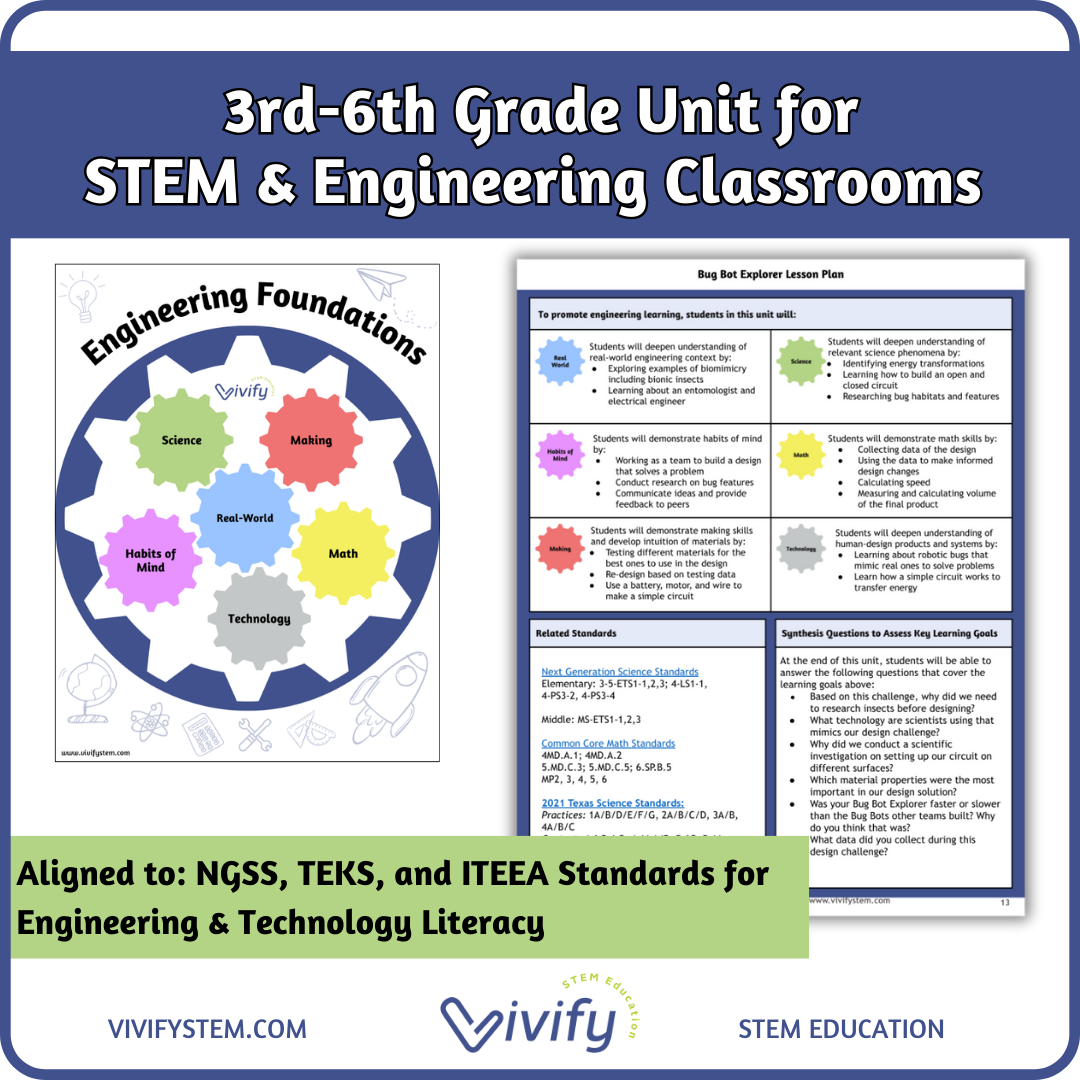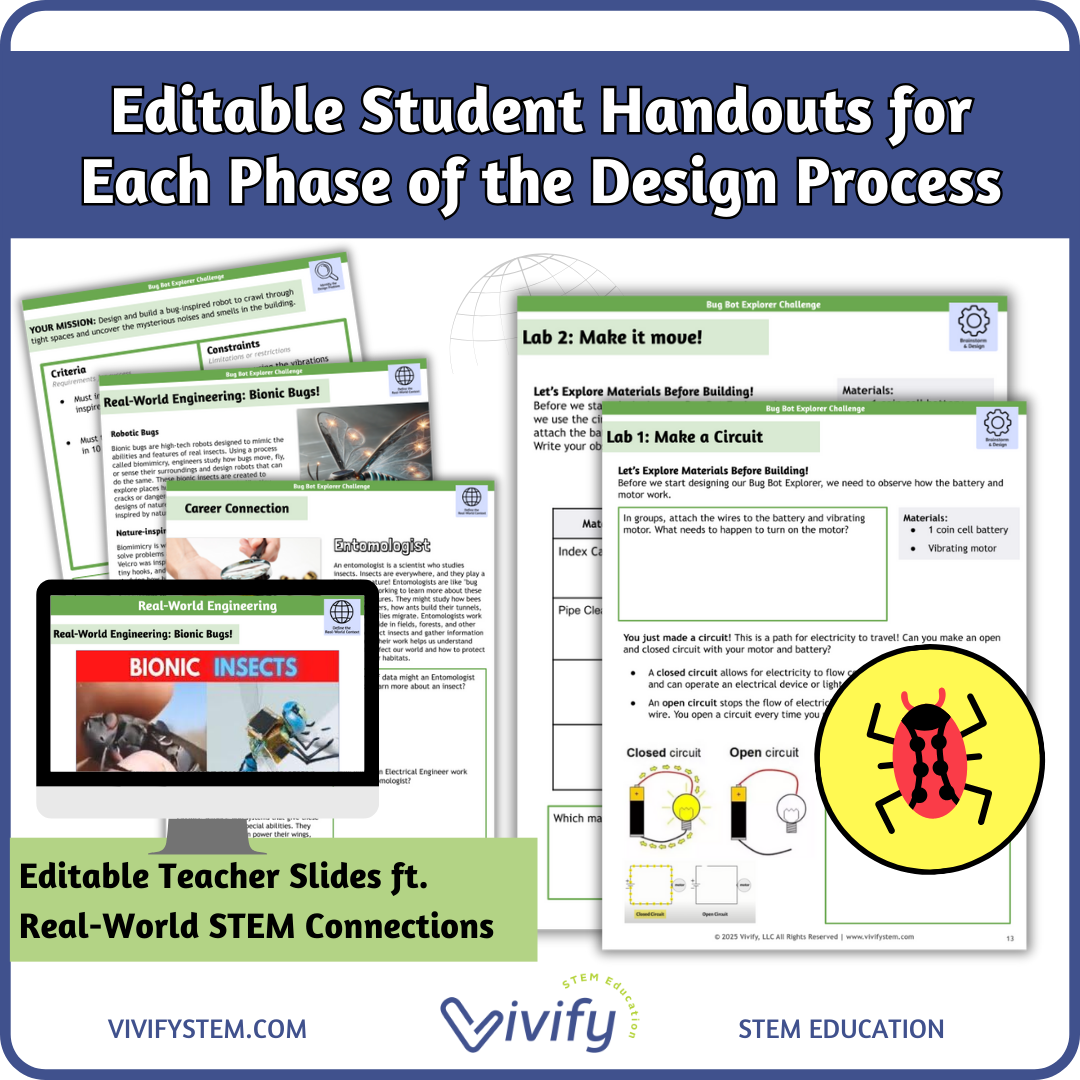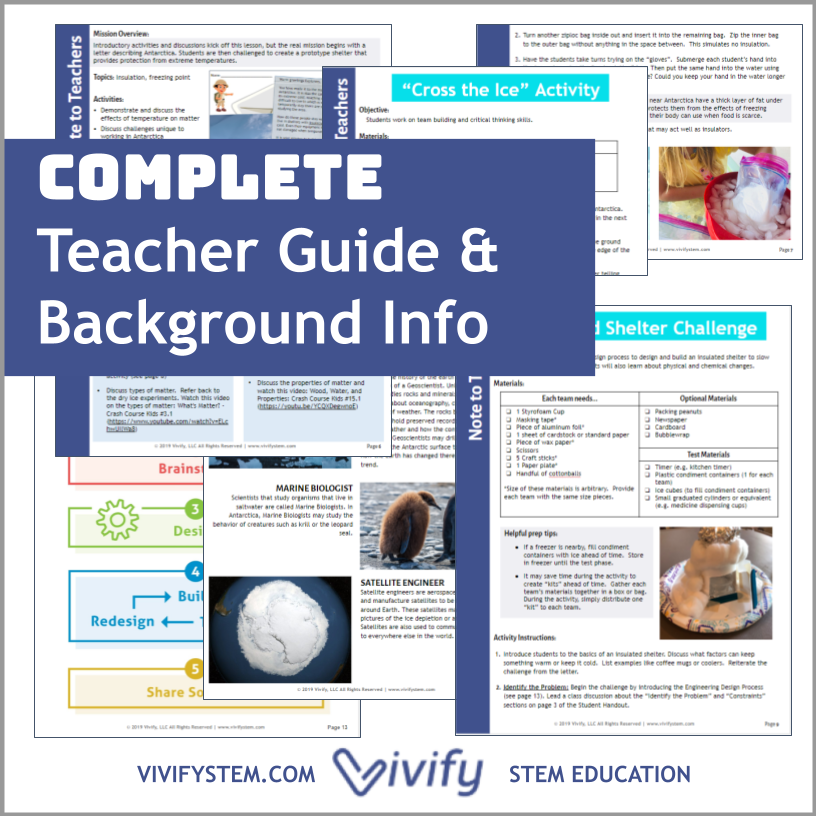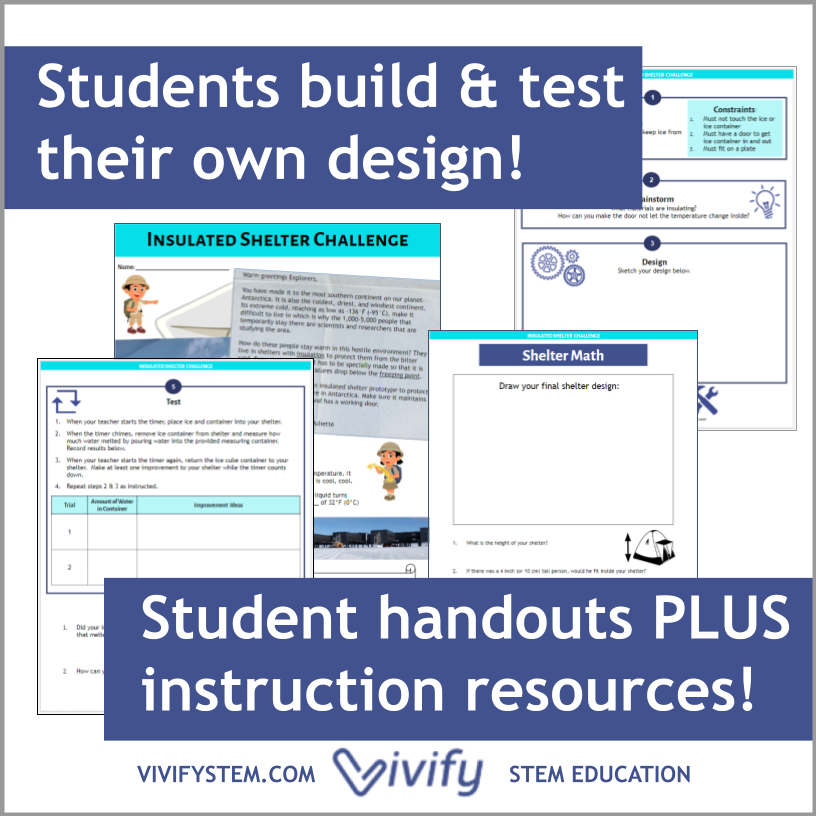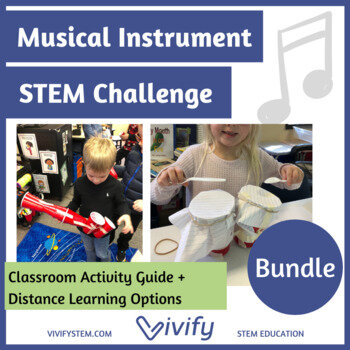Bug Bot Explorer Challenge: Engineering Design Unit on Energy Transfer
Attention engineers! The Future Robotics Agency has a top-secret mission for you. Strange noises and a mysterious smell are coming from the walls of a high-security building. No one knows what’s hiding in the pipes and vents, but it could be something important—or even dangerous!
In this hands-on STEM challenge, students design and build a bug to solve the mystery! This unit brings together engineering, life science, and physical science topics for an engaging design challenge.
The challenge is to build a “bug” that is powered by the motor and includes features inspired by a real bug. After learning about biomimicry and bug traits, students will conduct two labs including building a simple circuit with a battery and vibrating motor and then attaching materials to see how it moves. This includes learning about the structure and function of insects and how they can be useful in solving an engineering problem.
Take your STEM classroom to the next level with this Stage 2 Engineering Design Unit that includes real-world engineering, explicit science and math connections! Learn more about the stages of STEM here.
Engineering Learning Goals - Students will design a bug bot and gain a deeper understanding of:
Real-World Connections: Exploring examples of biomimicry including bionic insects and learning about an entomologist and electrical engineer
Habits of Mind: Working as a team to build a design that solves a problem, conduct research on bug features, communicate ideas, and provide feedback to peers
Making: Testing different materials for the best ones to use in the design, re-design based on testing data, and using a battery, motor, and wire to make a simple circuit.
Science: Identifying energy transformations, learning the components of an open and closed circuit, and researching bug habitats and features.
Math: Collecting data, using the data to make informed design changes, calculating speed, and measuring and calculating the volume of the final product.
Technology: Learning about robotic bugs that mimic real ones to solve problems, and learning how a simple circuit works to transfer energy
Included in this product:
Detailed teacher's guide with links to resources
Editable teacher companion Google Slides
Photos of student examples
Editable printed student handouts to guide them through the design process
Videos to motivate and support learning
STEM Career Connections and real-world examples
Science handouts
Student recording sheet for each step of the process
Materials:
Coin cell battery (3V)
Vibrating motor - make sure it is compatible with the 3V battery!
Option 1: Flat coin button - this one is easier to integrate in the design but not as powerful.
Option 2: Spinning motor - this one is stronger, but students will need to make sure the spinning part is not being blocked.
Clear Tape, timer and ruler
Craft materials like pipe cleaners, cotton balls, paper, and googly eyes for decoration. Keep in mind that it needs to be light.
For extension: LED light
Standards Alignment:
Next Generation Science Standards:
Elementary: 3-5-ETS1-1,2,3; 4-LS1-1, 4-PS3-2, 4-PS3-4
Middle: MS-ETS1-1,2,3
3-5: 1G, 2G, 4F, 5E, 6B; 1H, 1L, 2O, 2D, 7I, 7S; 1L, 2D, 7Q, 7J, 7U, 7N
6-8: 1K, 2N, 4K, 5F, 6C; 1J, 1M, 2Q, 2S, 7Q, 7S; 1M, 2Q, 2S, 7Q, 7R, 7U, 7V
Common Core Math Standards: MP2, MP3, MP4, MP6, 5.MD.C.3, 5.MD.C.5, 6.SP.B.5
Practices: 1A/B/D/E/F/G, 2A/B/C/D, 3A/B, 4A/B/C
Content: 4.6 B / C, 4.11 A/B, 5.6C, 5.11, 5.12C
Standards Alignment:
Next Generation Science Standards: MS-PS3-3; MS-ETS1-1,2,3,4
ITEE STEL Grade 6-8: 1K/J/M, 2Q/N/S, 4K, 5F, 6C, 7Q/R/U/S/V
Common Core Math Standards: MP2/3/4/5/6; 6.SP.B.5; 7.G.A.1
Practices: 1A/B/D/E/F/G, 2A/C/D, 3A/B, 4A
Content: 6.1A/B/C/D, 6.2C/D, 6.4A/C, 6.6A, 6.7A, 6.9A, 7.7A, 7.8A
